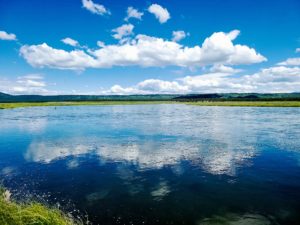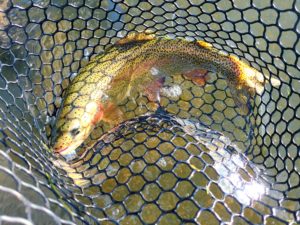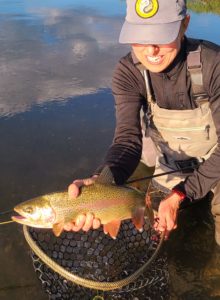
I like a challenge. If someone tells me something can’t be done, I undoubtably will try to do it. If there is a short road and a long road to doing something, I inevetably choose the long road. Some would call this a personal flaw, others, a testiment to my strength and strong character. I don’t make these decisions to wreck havic on athority or tradtions. That’s not the intent at all. Rather, it stems from a curiosity, a yearning, a need, to understand why.
I have always been that person. As a kid, my favorite word was “why”. I didn’t just ask it to be annoying. I actually, really wanted to know, and waited patiently and attentively, for the reason. During my school years I was a participating and engaged student. Classes that were structured to allow discussions were my favorite. I never hesitated to challenge the teacher to provide a sound arguement for concepts we were learning or for rules and protocals we had to follow. When they made sense, they made sense, and I happily followed. I just needed to understand the thinking behind it all.
When I went to Army bootcamp in Fort Braggs, my wonderings and need to question resulted in a lot of extra push-ups but, it also highlighted me as a thinker. In no time, I was made a platoon leader. Understanding the reasoning behind ideas, helps me to understand not only the final goal but also the process and necessary components to getting it done. It sets the stage for a greater understanding and I use this same approach when I fish.

Recently I made a trip to Henry’s Fork in Island Park, Idaho. I was meeting up with a new acquantance who over the weekend became a friend, Steph Albano, Owner and Founder of Finatical Fly Fishing. She puts together and hosts trips to different global destinations and offers incredible fly fishing expereinces to anglers of all levels. She caters especially to the female fly fishing clientele. We were on a mission to connect, expose her to tenkara and just have some fun fishing together.
I had never fished the Fork but had heard it was very technical dry-fly fly fishing. During this time of year when the drakes and duns are hatching, the river would be full of anglers. Henry’s Fork is a wide river, unemcumbered by any trees or covering foliage. It’s realatively shallow and with the exception of just a few deeper holes, it’s completely wadable from one side to the other.
All of these river characteristics are both positive and negative for the fly anlger. The abundance of bugs and insects means lots of healthy fish that grow to good size, a positive. But with a plentiful food source, the fish can afford to be choosy. If one meal doesn’t like quite right, another one will float by in less than half a second. Lots of fish in close proximity to the road with easy public access and safe wadable water, is awesome. Except, every angler also thinks this and that’s why is draws in the masses. Fish get pounded. There are tons of them, but they are targets all summer long…making them shy and spooky.

Talk about shy and spooky, that wide, open water that is so easy to cast on, also makes fish easy pick’ens for birds of prey such as eagles, osprey, falcon, hawks, owls and the likes. So any shadow, movement or view of tippet makes these fish hunker down and wait for the clear. Picky fish due to an adundant food supply, that get fished alot, are easy targets for birds of prey and have no where to hide – well, that’s why Henry’s Fork is considered technical water. The final reason that Henry’s Fork is so tricky to fish, is that it’s clear as gin, or vodka, pick your poison. You get my drift. With neglagable wind most days and fairly even flows, you can eye those fish and they can eye you right back. Ah, the yin and the yang.
Well, on this particular weekend we were put to the challenge. Not only were the banks lined with evenly disbursed fly fishers, gazing steadfastly at the surface of the water for any sign of a feeding fish, but the wind was howling…not just blowing – but howling, all day long. There is no blind casting there. Anglers target rising fish. But no fish were rising all day long. Even into the evening, during the sunset hatch, the wind continued to blow hard, disrupting the water surface so the fish could see nothing and the rises just didn’t happen except for a very, very few. This was the way it played out for two days.
So here’s why I put my tenkara rod away and pulled out my rod and reel set up. To be clear, it wasn’t because the fish were too big or I wouldn’t be able to manage them. That was absolutely not the case. The problem was more about the conditions that were impacting the fish behavior.
- Fish were picky and skidish. 4x tippet would not work. 5x or 5.5X RIO Tippet was an absolute requirement.
- Because the fish were so spooky I initially thought a longer line and leader/tippet setup would be better. It would give me some distance and keep the tip of the line far away from the fish.
- Because the wind was blowing so hard bugs were not staying on the water surface and fish just weren’t able to spot their meals on the top of the water so, they just weren’t feeding. This meant shots or chances were very few and far inbetween.
- Because the river is so wide and consistant, there really weren’t any bubble lines, pools or much structure, the fish were/could be holding any and everywhere. This meant your required cast distance could abruptly change.
By the end of the first day, 2 fish were landed between the 3 of us that were fishing (my husband included). On the second day, we faced the same issues as the first and called in quits in the afternoon when things die down and turn off anyway. When we came back in the evening, I switched from my Zen Sagi to my Winston 9ft 5wt. We drove to a different location on the Fork that was a bit out of town and we hoped, a little less crowded. Steph called it right and we scored an unoccupied section of the river and spaced ourselves out around a nice bend. As we stood at the edge of the water, we started to see an occasional fish rise here or there. Some 10ft away, another clear on the other side of the river.

While the wind was still blowing hard and the fish were usually quite for this time of year, by night’s fall my husbad had one fish on and 2 missed hooksets. I had one missed hook set and one fish landed. Steph gracefully bowed out to go home and take care of her furry companion who had been ill the previous days….and since she wasn’t “missing out on anything” she said good night. The sun set and I got that deep chill from standing still in cold water for way too long. It was time to un-wader, warm up and put the rods away.
That night over dinner at Trout Hunters I reflected on the last two days and the challenges we faced. I wondered if there was anything I could have, should have done differently. The fact was, the weather was just a bust. It had been really hot the previous week – in the mid to high 90s, water was let out for agriculture needs, and the wind man – the wind was simply unforgiving. Sometimes that’s just the way is goes. I hadn’t really caught more fish on my reel than tenkaraI just didn’t have any risers to cast to. I decided I wanted to come back. I wanted a shot at this technical fishing, minus the howling wind. The fish will still be persnicketty. The bugs will still be plentiful – as well as the anglers. And the river will still be wadable but probably lower, and clearer. So is it possible on tenkara? I think so.
The fish are big but not huge. I’ll need to scale down on the tippet to get a shot at one. Or, (here’s my real plan) I can keep a slightly bigger tippet (4x) but shorten my line from the long one I was using. This would allow me to keep the tippet off the surface of the water and fish my rod more traditionally with tip up, and only the fly on the water surface. I could offer up a pristine meal presentation that might really get some good fish action if I could be on the Fork when fish are actively rising. By keeping the tippet bigger, if I connect…when I connect, the likelihood of staying connected and landing the fish is GREAT. I can move in this shallow water and keep steady pressure on the fish avoiding any big pops or runs that could cause a break. And the fish themselves are well withn my tenkara limits.
So, next time my approach will be different. Rather than a long line setup with very light tippet, I think I’ll move to a shorter setup with a bit bigger tippet, but with my longest rod to help with that stealth factor. I don’t know if it will work. And really, I don’t know if the setup I was using did or didn’t work. We simply didn’t have the opportunities to give it a try. After a day and a half of no action though, I wanted, I needed, to hook – and land something, so I switched to my Hatch reel to up the odds of not getting skunked. And that’s okay, ’cause sometimes you do need a reel.



